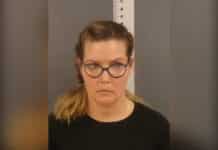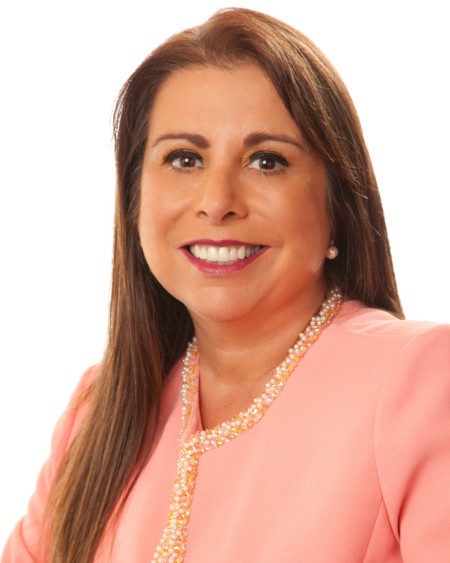Updated 9:23am 12/10/2015

A well-liked St. Paul Central High School science teacher was sent to the hospital with a traumatic brain injury after being attacked by a 16 year old student on Friday, December 4, 2015. According to a juvenile petition filed Tuesday, Fon’Tae O’Bannon picked up John Ekblad, “forcefully slam(med)” him onto a chair and table, then choked him as he lost consciousness. The student and his 15 year old brother, who punched an assistant principal when he attempted to intervene, have been arrested and charged with felony assault.
The injured teacher is out of the hospital and, as reported by the St. Paul Federation of Teachers President, Denise Rodriguez, “…(like) other teachers who have been assaulted at work: rather than thinking of taking care of himself, he was worried about being away from his classroom too long and about the instruction his students will miss.”
As a result of the 27th attack of a St. Paul School District official, the President of the St. Paul Federation of Teachers released a statement saying, in part: “We will not wait any longer for action by our district’s administrators…” and “our union has filed a petition for state mediation. This step is required by state law to trigger our teachers’ right to strike. Teachers don’t want to walk away from their classrooms or their students but if our school climates are not safe and equitable environments for learning, that is a step our members may need to take. We can wait no longer.”
According to a report by KARE11 News, Superintendent Valeria Silva was “very surprised” by the letter from the St. Paul Federation of Teachers because she felt that contract talks had been moving in the right direction. She said that schools need to address student and teacher safety, but also seemed to attempt to place blame elsewhere (video): “This is not a school issue, this is a community issue, too…many of this (sic) issues come from the community, the environment our students are living…Let’s look at what has happened over the last six weeks in America. How many incidents with terrible violence…our students are deeply, every single day, exposed to by the media…”
But should Superintendent Silva be surprised by the SPFT’s threat to strike if school safety (and the union’s other demands for a 2.5% pay increase along with lower class sizes and additional student support staff across the district) isn’t addressed considering the many issues SPPS has faced over the past several years, especially those relating to school climate and safety?
In 2010, Superintendent Silva began working with Pacific Education Group to address racial inequity in SPPS. Excerpts from Courageous Conversations About Race: A Field Guide for Achieving Equity in Schools, written by PEG’s founder, Glenn Singleton, show the process taken by Silva and PEG to transform SPPS:
Led by Silva, in December 2010, SPPS initiated its efforts toward systemic racial equity transformation by focusing on school and district leadership. This began with a series of Beyond Diversity seminars, PEG’s foundational introduction to Courageous Conversation, for the superintendent along with the members of the cabinet, department directors, and school principals…SPPS established the district Office Equity. The explicit goal of this office is to support the district schools’ efforts to eliminate racial disproproportionality and predictability of low achievement by accelerating the achievement of our lowest-performing students and increasing achievement for all students…All SPPS schools have established site-based E-Teams, which are implementing racial equity development and training at each of the school sites…
The SPPS “Office of Equity” is based in “Courageous Conversation Protocol“:
The specific protocol for having Courageous Conversations about race include using the agreements, conditions and compass.
Four Agreements: Stay engaged; Speak your truth; Experience discomfort; Expect and accept non-closure.
Six Conditions: Focus on personal, local and immediate;Isolate race; Normalize social construction & multiple perspectives; Monitor agreements, conditions and establish parameters; Use a “working definition” for race; Examine the presence and role of “Whiteness.”
Five years and $3 million later (paid to Pacific Education Group), and after sending eleven staff members (including Superintendent Silva) to the five day “Summit for Courageous Conversations on Race” held by Pacific Education Group at the $300/night Marriott Renaissance Harborplace Hotel in Baltimore in October, St. Paul Schools are in crisis and facing a possible teacher strike.
The solution to the problems proposed by the St. Paul Federation of Teachers is to move SPPS to a “Restorative Practices Approach” to address school climate and safety, claiming that SPPS went from an environment of “punitive, zero tolerance approach to student discipline and school climate,” to one that “…moved to just not suspending students and rewarding principals who did not suspend.” SPFT goes on to state:
“…Continued and shifted, but never fixed, racial inequities — while it looked good on paper, many of our students, though not referred or suspended, were not getting the help they needed to be successful.
- Built no capacity with staff, students or community for interacting differently.
- Wasn’t sufficiently reactive or proactive—our buildings became chaotic
These approaches have failed our students and community.
We cannot continue a system that replicates a failed criminal justice system within the walls of our schools. And we cannot continue to ignore student behaviors and not address the underlying issues that are causing them. We need to build a restorative culture that unlocks the gifts of all students in a manner they deserve.
The changes include using a “restorative culture” to build teacher-student relationships; teachers working together with parents and community to solve school climate issue problems; addressing racial inequities and keeping students in the classroom; involving stakeholders to repair the community when disruptions happen; being proactive to build a restorative culture to prevent disruptions. Building the “restorative culture” requires: Supports (counselors, social workers, nurses), individualized attention, family engagement, on-going professional development, and shared decision making. Furthermore:
This work is a continuation of our success connecting parents and teachers. Just as it took parents and teachers working together to win a kid-centered contract campaign, and to potentially win a new transparent and responsive school board, parents and teachers have to work together to secure a restorative culture in their building. This will take a commitment from the district to reallocate resources so that parents, teachers and students can undertake this work together. We will need to not only be clear on how we are going to prevent disruptions to learning, but clear on how to respond when they do happen—recognizing that student disruptions are often a signal that we need to respond to with all support necessary.
Undertaking these changes not only require more engagement on the part of the administration, staff and parents, but a substantial increase in funding for additional support staff (counselors, nurses, school psychologists and social workers) as well as a demand for an additional $100,000 per school site for SCITs: “School Climate Improvement Teams” – 2.1 These teams will be composed of students, teachers, a licensed administrator (the principal or assistant principals), paraprofessionals, and other staff members in the building. Students, parents and members of the community may be nominated by teachers and administration…Student, parent and community membership of the committee must be proportionate to and representative of the student population served by the building.
The proposed changes seem to echo some of the items on the “Demands” lists of college students around the country, as well as the “Legislative Priorities” for 2016 listed by Education Minnesota, and would work well with a Full Service Community Schools Model. The FSCS also happen to be a priority for Education Minnesota, as reported on earlier this week by Alpha News MN:
Education Minnesota, which employs dozens of highly-paid lobbyists at the Capitol, wants an additional $2 million in funding from the legislature to expand FSCS in Minnesota. Teacher’s Union President Denise Specht is already asking for part of the current $2 billion budget surplus to fund more FSCS’s. “We’re asking lawmakers to tap the $1.9 billion budget surplus to pay for the ‘shovel-ready’ projects the department couldn’t fund this year, and to expand the concept even further.” At the national level, the American Federation of Teachers has also worked for more full service schools.
School safety is an issue in Minnesota, with students, staff and teachers negatively affected daily by violence or threats of violence, but will additional funding and changing the landscape and scope of schools (into “Full Service Community Schools) bring about the needed changes? Or would a return to high expectations for student behavior be a less expensive and less intrusive means to accomplishing a safer environment for teachers and students alike?
A beloved science teacher suffers from brain trauma now, while Fon’Tae O’Bannon, the St. Paul Central Junior accused of attacking him, has been arrested and charged, City Pages reported:
Beyond the felony assault charge handed down Tuesday, O’Bannon faces one count each of fourth-degree assault and obstruction of legal process. He allegedly began laughing when the cops showed up and told him he was under arrest. O’Bannon denied assaulting the school staffers.
According to his mother, Venus Hall, O’Bannon, didn’t realize it was a teacher restraining him from behind when he turned and threw the teacher against all wall, a table and a chair, then proceeded to choke the teacher until he passed out:
He played football at Central, worked at a pizza place and was a baby-sitter. He aspired to work in law enforcement, but Hall thinks he won’t want to now that she said he’s been accused of “so many lies.”
“We’re not talking about a kid who is destructive,” she said. “He’s a hard worker. A mistake did happen and he’s sitting in there right now worried about what’s going to happen with his future because of it. (Pioneer Press, 12/9/15)
Maybe school safety issues are more of a societal problem, “mistakes,” too big to be expected to be fixed by the school system alone?











